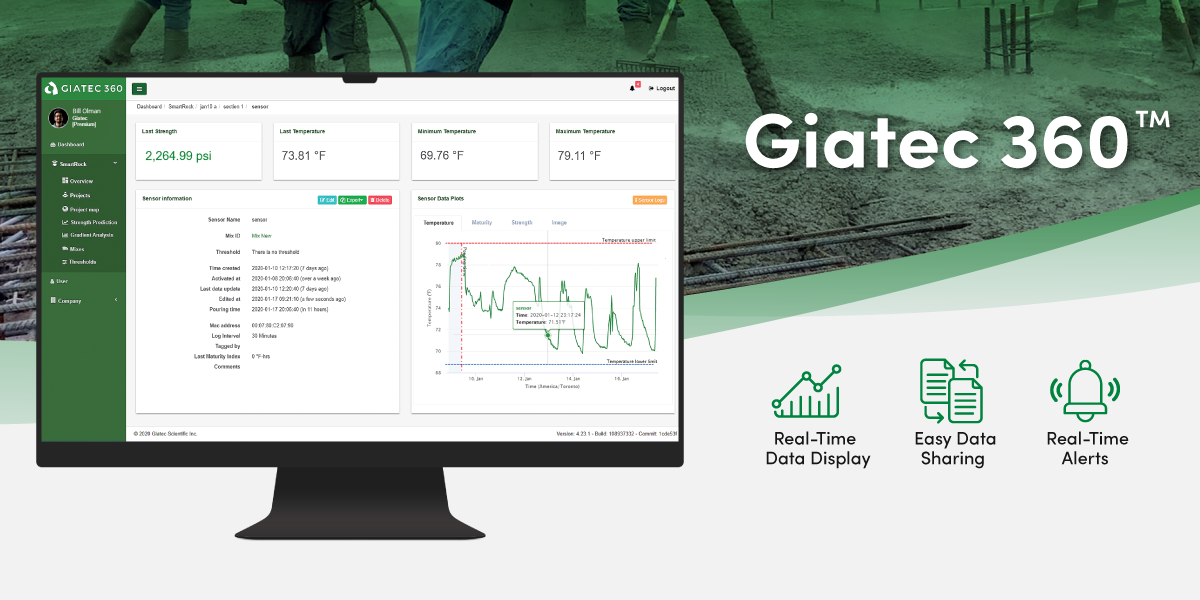In the pursuit of saving time, it becomes difficult when a project is caught up in contracts and agreements, project changes, and the many regulations and procedures that are necessary to complete a project. These problems cause other concerns such as relevant equipment, materials, and foreman required to finish a project on time. Telematics is defined as long-range transmission of data. In this case, telematics uses wireless communication to create data that can be saved and shared for the purpose of site optimization. With the recent developments in wireless sensors, remote data monitoring, and mobile apps, construction companies will be able to track data such as equipment usage per day, the location of each tool, concrete curing level, and even assessing the performance of the equipment. Here are three ways that the telematics technology can improve productivity on construction sites.

Got the game on? Don't miss a shot with SmartRock® in hand.
Move faster. Cure better. It’s game on with SmartRock.
1. Improve Organization
The time it takes to organize, plan, schedule, and begin a project is already a lengthy ordeal. Finding ways to cut production time is essential for all construction businesses. Integrating wireless communication using sensors with mobile devices and construction equipment allow companies to track necessary data, and in turn make better decisions for the future. For example, knowing the real-time temperature and strength of concrete through wireless concrete maturity meters embedded in structures can help with project scheduling as it relates to the optimization of formwork removal and post-tensioning processes. These technologies will allow project managers to identify the length of time needed for specific projects, and successively improve productivity on the jobsite.
2. Track Location
In most construction sites, it is difficult to audit the accountability of used equipment. Using GPS tracking and wireless communication, it will be easier to locate tools when needed, reduce lost or stolen items, and assign equipment to each foreman at different times. Additional options to have each foreman sign the tools in and out with the use of barcode scanning will help with organization and accountability. Tracking the location of equipment and vehicles can also help reduce theft. Tracking location is also helpful when using wireless technology, as distance is a factor in order to extract data from one device to the next. Overall, data that is obtained and shared with wireless communication help eliminate conflicts in locating, assigning, and assessing equipment.
3. Save Money
Project costs and estimates can be more accurate with wireless technologies, as the usage of equipment will be monitored and the construction stages are completed on time. This includes the number of pieces and length of time needed for specific projects. Using mobile devices and sensors to alert you of equipment and concrete material performance can also save money for contractors and construction companies by reducing the amount of unsafe encounters and accidents. Concrete producers and users save time and money by adopting wireless technologies to obtain detailed data on their concrete mixture, such as temperature, maturity and humidity, in order to avoid common but time-consuming and costly ways to test concrete. And if the equipment features GPS tracking, companies could be eligible for various insurance premiums. Insurance costs can be lowered and deductibles reduced or eliminated based on using wireless GPS software on construction equipment and vehicles. All these will also lead to early project completion time and in turn significant financing cost saving for the builders.
Sources:
Concrete Construction: TELEMATICS, RFID, AND BAR CODES EMPOWER CONTRACTORS WITH DATA
Top 10 Benefits Of Construction Equipment Telematics
Photo Credit: Hilti USA









